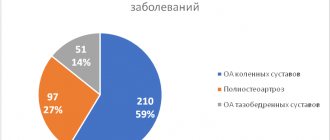anthrax
The incubation period of anthrax usually takes 3-5 days, but can last up to a week or two, and can also last for several hours. The most common clinical form of anthrax: carbunculous. In this case, a carbuncle is formed on the skin at the site of penetration of the pathogen, passing successively through the stages of spots, papules, vesicles and ulcers. First, a red, painless spot forms, quickly transforming into a copper-red (sometimes purple) papule raised above the surface of the skin. At this stage, patients are usually bothered by itching and some burning of the affected area.
After a few hours, the papule progresses into a serous fluid-filled vesicle about 2-4 mm in diameter. The contents of the vesicle soon acquire a dark, sometimes purplish-purple, hue as a result of hemorrhage. When opened (on its own or when scratched), the vesicle forms an ulcer with a dark brown bottom, raised edges and a serous-hemorrhagic discharge. In a typical course, the primary ulcer is surrounded by new vesicles, which upon opening merge and enlarge the ulcerative defect.
After a few days (sometimes up to two weeks), a black necrotic scab forms in the center of the ulcer, gradually replacing its entire bottom. In appearance, the carbuncle resembles a burnt crust, is painless, surrounded by a purplish-red inflammatory ridge that rises above the unaffected skin. The tissues around the carbuncle are markedly swollen, often the swelling covers a significant area (especially if localized in places with loose subcutaneous tissue, for example, on the face). When the carbuncle is located on the face, there is a high probability of swelling spreading to the upper respiratory tract and the development of life-threatening asphyxia.
From the very beginning, the disease is accompanied by significant intoxication (headache, weakness, adynamia, muscle aches, lower back, possible abdominal pain), fever. After five to six days, body temperature drops sharply, and general and local clinical manifestations regress. The scab is rejected after 2-3 weeks, the ulcer gradually heals, leaving a rough scar.
As a rule, a carbuncle is formed in a single copy; in rare cases, their number can reach 10 or more, which significantly complicates the course of the disease. The greatest danger is represented by carbuncles on the head, neck, mucous membranes of the mouth and nose, which significantly worsen the course and threaten to be complicated by sepsis.
The edematous form at the first stage is limited by swelling of the tissues; the carbuncle forms later and is quite large in size. The bullous variety is characterized by the formation of blisters filled with hemorrhagic contents in the area of the entrance gate of infection, which, after opening, transform into extensive ulcers progressing into carbuncles.
Generalized forms of anthrax are characterized by predominant damage to the respiratory system (pulmonary form). Clinical manifestations resemble those of the flu: symptoms of intoxication are accompanied by cough, runny nose, lacrimation, increased breathing, tachycardia, and shortness of breath. This phase of the disease can last from several hours to two days, after which there is a significant increase in signs of intoxication, the fever reaches critical levels (39-40 degrees), and chills are expressed. Sometimes during this period there is pain and tightness in the chest; when coughing, copious sputum with a bloody admixture is released, which when coagulated resembles cherry jelly. Subsequently, there is an increase in oliguria, signs of cardiovascular failure, and pulmonary edema. The duration of the last phase of the disease does not exceed 12 hours, the patients are conscious.
The most severe is the intestinal variety of the generalized form of anthrax, which has an extremely unfavorable outcome. The first phase, as in other cases, is characterized by fever and severe intoxication, accompanied by a burning sensation and soreness in the throat, and lasts up to a day and a half, then this symptomatology is accompanied by severe cutting pain in the abdomen, nausea, vomiting with blood, and diarrhea. Blood is also visually detected in the stool. In the third phase, increasing cardiac decompensation takes place, the face acquires a purplish or bluish-pink tint, scleral injections are noted, and there may be petechial or hemorrhagic rashes on the skin. Patients are anxious and fearful.
The septic variety of the generalized form occurs in the form of primary or secondary (which was a complication of another form of anthrax) sepsis. In this case, there is a very rapid increase in the symptoms of intoxication, numerous hemorrhages on the skin and mucous membranes, and the meninges are often affected. This form often progresses with the development of infectious-toxic shock.
Epidemiology of the disease
Anthrax has been registered in the North Caucasus, Southern and Siberian federal regions of the Russian Federation over the past five years. In total, 40 people fell ill. This number exceeded the identified patients over the previous five years by 43%.
Humans become infected from domestic herbivores - sheep, large and small cattle, horses, camels, donkeys, deer and pigs. Pathogenic bacteria are released into the external environment through urine, saliva, feces, milk and discharge from wounds. In animals, the disease occurs in the form of a septic form. After their death, all organs remain contagious, even skin, wool and bones. In a spore-like state, anthrax pathogens persist for decades in manure and soil.
Rice. 3. The photo shows anthrax in a cow.
Rice. 4. The photo shows anthrax. Carbuncle on the face.
Consequences and complications
Anthrax can lead to serious complications, including:
- Brain swelling.
- Inflammation of the membranes of the brain.
- Bleeding in internal organs.
- Intestinal paresis.
- Inflammatory process in the intestines and abdominal cavity.
- Pneumonia.
- Pulmonary edema.
- A drop in blood pressure to a state incompatible with life.
Prevention
Prevention of the disease is carried out in close contact with the veterinary service.
Epidemiological surveillance
Anthrax surveillance activities include:
- identification of a population at high risk of disease,
- establishing the time of the incident;
- identification and strict accounting of disadvantaged settlements, livestock farms and pastures;
- identification and strict registration of cattle burial grounds and other burial places of sick animals;
- examination of soil samples during the construction of buildings for children;
- conducting active monitoring and analysis of morbidity rates in animals and people;
- carrying out work on the exchange of information between veterinary and medical services.
Veterinary and sanitary supervision
Activities for veterinary and sanitary surveillance of anthrax include:
- identification and elimination of epizootic foci;
- imposition of veterinary quarantine;
- vaccination of livestock;
- carrying out bacteriological research of cattle burial grounds, pastures and reservoirs.
Rice. 18. Veterinary service specialists, at the slightest suspicion of anthrax, go to the scene of the incident and take samples of biological material, which are sent to the veterinary laboratory.
Rice. 19. Carcasses and skins of sick animals are burned and the area is disinfected.
Rice. 20. Burning the corpses of sick animals.
Rice. 21. Declaration of quarantine in the outbreak of the disease.
General information
A dangerous infectious disease, anthrax also has other names - malignant carbuncle , anthrax .
From ancient Greek the word “anthrax” is translated as “coal, carbuncle.” This name of the disease is explained by the fact that the scab in the skin form of the disease has a coal-black color. This dangerous infection, caused by the bacterium Bacillus anthracis, affects animals and humans. The course of the disease can be different, but in humans it occurs, as a rule, in the carbunculous form. The characteristic symptoms of anthrax are intoxication , serous-hemorrhagic inflammatory manifestations on the skin, internal organs and lymph nodes. The disease occurs in cutaneous and septic forms.
As Wikipedia and other sources testify, this disease has been known since ancient times and is described in a number of sources that have come to us since ancient times. In the works of ancient scientists it was called “Persian fire” or “sacred fire”. In 1766, the manifestations of the disease were described in detail by the French physician Moran. Later it received the name “anthrax”, since in the eighteenth century the disease actively spread in Siberia. In his work “On Anthrax,” the doctor S. Andreevsky described the epidemic of the disease in Siberia, proving that the disease can be transmitted from animals to people. Since then it has received this name.
How the disease is transmitted, its characteristic symptoms and treatment are described in this article.
Diet
Diet 13 table
- Efficacy: therapeutic effect after 4 days
- Time frame: no more than 2 weeks
- Cost of products: 1500-1600 rubles per week
Patients are recommended to follow Diet 13 table . Recommended dishes include lean meat and fish, slimy soups and low-fat broths, dairy products, eggs, cereal porridges, vegetables, fruits, tea, rose hip decoction, etc.
A number of products are prohibited from consumption. This list includes:
- Spicy dishes.
- Fat meat.
- Fresh bread and pastries.
- Sausages and canned food.
- Fat cheeses and sour cream.
- Products that increase gas formation - legumes, cabbage.
- Coffee, alcohol.
More detailed information is contained in the “diet” presentation.
Disease prognosis
Cutaneous form of the disease . Mortality rate is up to 2% if treatment is not started in a timely manner. Up to 20% - in the absence of treatment.
Pulmonary form of the disease . Mortality is high. Even with timely and adequate treatment it is 90 – 95%.
Intestinal form of the disease . The mortality rate reaches 50%. Anthrax meningitis. The mortality rate reaches 90%.
Septic form . The prognosis is unfavorable even with timely and adequate treatment.
Diagnostics
The result of simple microscopy helps to establish a preliminary diagnosis. The method of inoculating biological material on nutrient media is a classic method for determining the causative agent of anthrax. Results are obtained within 36 – 48 hours. To carry it out, discharge from the carbuncle, blood from a vein, sputum, urine, feces, and cerebrospinal fluid are used. The biological method is based on the isolation and identification of pathogens from the tissues of animals infected with anthrax bacteria. A skin allergy test is carried out to determine antibodies to the pathogen in the patient’s body.
Rice. 16. The photo shows the causative agents of anthrax. On the left is a view under a microscope. On the right is the culture of the pathogen.
How does infection occur?
The source of infection is feces, saliva and other excrement of sick animals, which remain extremely contagious throughout the entire period of the disease. After death, all organs of the animal remain contaminated with bacteria, including skin, fur, wool and even bones.
There are many ways of contracting anthrax, but the most common is contact.
There are also food, airborne and vector-borne routes of infection.
Contact route of infection transmission (through skin)
It is observed when working with sick animals (foragers, workers in dairy farms, stud farms) or when working with meat and skins of killed animals (workers in meat processing plants, leather goods industry). In 20% of cases, transmission of infection occurs through finished leather products, on which pathogens persist for more than 10 years.
Foodborne transmission of infection
During food transmission, pathogens enter the gastrointestinal tract with infected and insufficiently thermally processed food products: meat, milk and lactic acid products.
Airborne dust transmission route
It is observed among workers involved in leather tanning and when working with their fur and hair from sick animals.
Transmissible route of infection transmission
The causative agents of the disease can be transmitted through the bites of horseflies and burner flies, in whose mouthparts the causative agents of anthrax are present for up to 5 days from the moment of entry.
Laboratory route of infection
It is noted when safety precautions are violated by laboratory employees.
Rice. 5. Contact route of infection is observed when working with sick animals (foragers, workers of dairy farms, stud farms) or when working with meat and skins of killed animals (workers of meat processing plants, leather goods industry).
Rice. 6. The photo shows anthrax. Carbuncle on the hand.
Rice. 7. The photo shows anthrax. Carbuncle on the hand.





